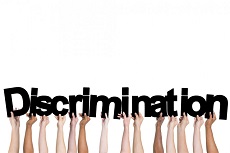
Discrimination in the workplace can take many forms. It might be because of a person’s race, ethnicity, gender, disability, age, religion, or sexuality. It’s no joke if you think it’s happening to you; however, dealing with it can be challenging to say the least. Workplace discrimination is actually more common than you think. Exact numbers vary, depending on which study you refer to, but there is one common element. Workplace discrimination is a real problem.
If you think you’re on the receiving end of any form of discrimination, these are the steps you should take.
Talk to Someone about It
This step is something you should do before you take any kind of action. Find a trusted non-work friend, attorney, spouse, doctor, or family member. Give them the facts and ask their opinion. It’s best not to have this initial conversation with anyone at work or in the HR department.
Know Your Rights
There are several legal precedents and laws that relate to discrimination in the workplace. All workplaces are required to make the rights of employees known to them. It might be a poster that’s displayed in the restroom, or a section of your employee handbook may cover discrimination. If you don’t know where it is, you should ask your employer for the policy and procedures relating to discrimination. It will usually give details of the responsibilities of the employer and the procedures that are in place.
Document and Report
It’s important that you keep a diary of any incidents of discrimination or harassment. Make a note of the date, approximate time, location, who was involved, witnesses, and details of the incident. You are then obliged to make your employer aware that you feel you’re being discriminated against or harassed. If you don’t make it clear that something is unacceptable or unwelcome, such acts will go unrecognized or unpunished. Your employer is responsible for complying with the law, but it is your responsibility to make sure your personal rights are protected.
If There is no Response from Your Employer
The federal Equal Employment Opportunity Commission is responsible for overseeing compliance for many federal anti-discrimination and anti-harassment laws. There is also your state equal employment agency that you can contact. Another possible course of action is to talk to a lawyer. Choose one that has experience in working with such cases, and you might be able to contact a solicitor to help you get a settlement agreement. This is a harmonious agreement you come to with your employer that negates the need to resort to lengthy and stressful employment tribunal proceedings.
If you ever find yourself a victim of discrimination where you work, it’s always going to be useful if you know what to do. The four steps above are the most important and will help you get the recognition you need. We live in a world where equality is everyone’s right, but sometimes you have to do certain things to make sure you receive it.






